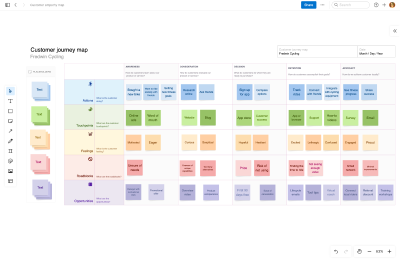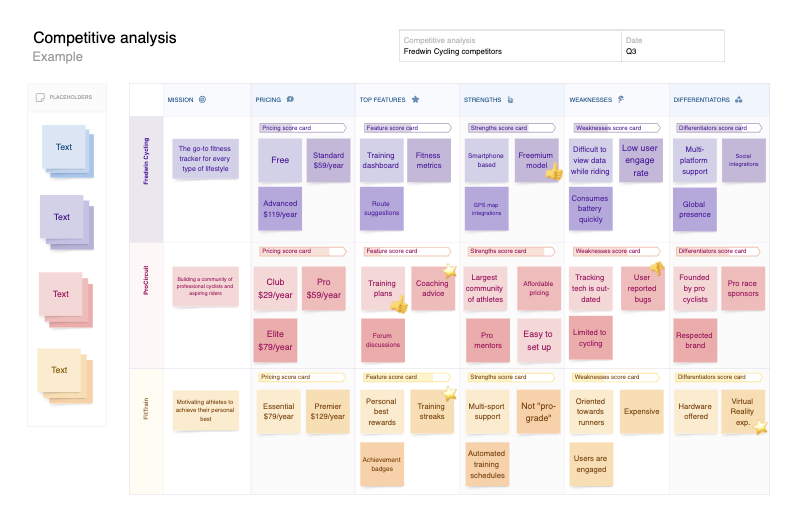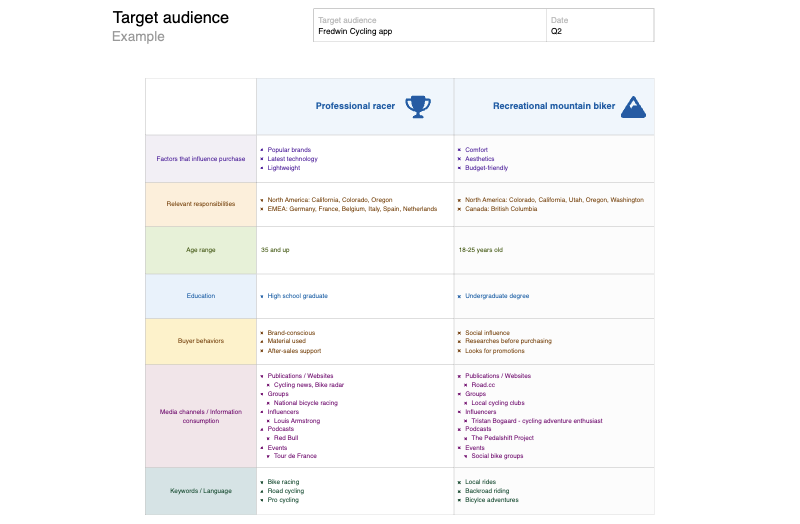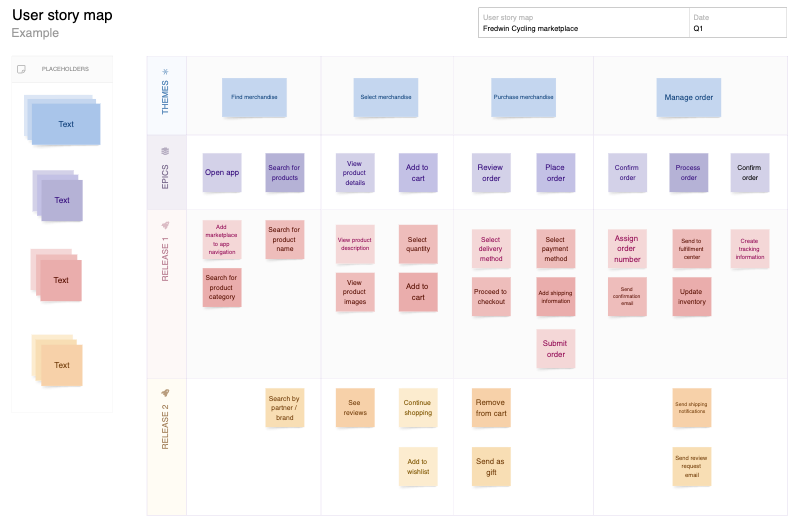Customer empathy map template
Gain insights into customer perspectives, needs, and feelings
Use template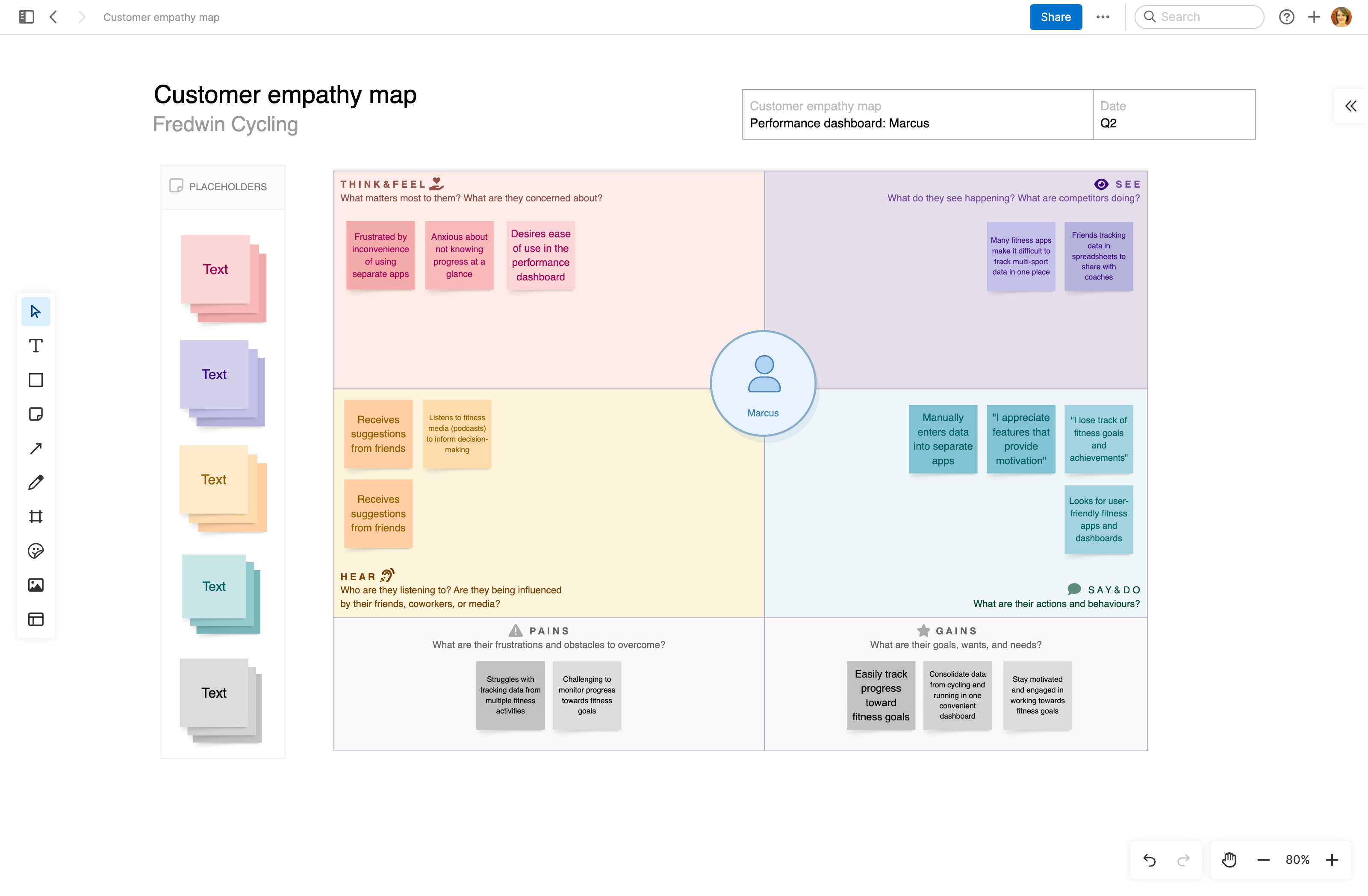
About the customer empathy map
Building a lovable product requires a deep understanding of who your customers are and what they need. A customer empathy map can be a great tool for your product team as it explores and internalizes users' thoughts and feelings. Use this template to think through customers' preferences, concerns, and behaviors as they use your product. This gives you a framework to better understand the problems you need to solve (and their unique solutions).
Included in the customer empathy map template
This customer empathy map template includes built-in capabilities such as:
A menu of classic whiteboard features (including shapes, sticky notes, grids, and emojis)
Quick access to best practices and a pre-filled customer empathy map example for guidance
Inline comments to gather feedback, questions, and ideas from teammates
Presentation frames to easily share your work
How to use the customer empathy map template
This customer empathy map template is an ideal place to capture information about what your customers experience as they use your product. It is divided into sections for what they think and feel, see, hear, say, and do — plus additional sections for their pains and gains.
As you draft, make sure to pull in real customer feedback from relevant personas or user segments. You can also invite teammates from other groups (such as marketing and customer support) to contribute their insights. This helps you capture a more holistic view of what your customers care about.
Best practices
Foster a deeper understanding of customers to help you build more lovable products.
Build your foundation: Begin with basic information that you already know. Reference existing resources (such as personas, market research, and competitive analysis). This will give you an idea of where gaps might exist.
Involve teammates: Gather input from outside your immediate team. Draft a customer research plan, if needed, to help round out your findings. Add comments and questions on the whiteboard to highlight areas that warrant further discussion.
Summarize findings: Identify any themes or major insights that emerge on the map. Then, prioritize which pain points you will address to improve the customer experience.
FAQs about the customer empathy map template
Why is the customer empathy map important?
A customer empathy map can help spark conversations about customers' goals, priorities, concerns, behaviors, frustrations, and more. By gathering these details in a single place, product teams can better understand what folks truly need — and can apply these insights to build more customer-centric offerings.
What are some customer empathy map best practices?
Use what you already know about your customers as a starting point. Pull in information from personas, customer interviews, and market research. Collaborate with cross-functional teams to ensure your insights are diverse and comprehensive. Finally, be sure to update the map as you collect more feedback from customers and iterate on your product.
Who is the customer empathy map for?
This template is for product managers, UX designers, marketers, and anyone aiming to better understand customer needs and motivations as they interact with your product. It is especially useful for helping product teams prioritize features that will deliver the most customer value.
Is this template free to use?
Yes. To use this customer empathy map template, sign up for a free 30-day trial of Aha! Whiteboards. (You can also try this template in Aha! Roadmaps if you need a complete product management solution.) Easily customize the template to suit your needs, then share it with as many people as you want (for free) to streamline collaboration.

